
Dr. Mario is a 1990 action puzzle video game produced by Gunpei Yokoi and designed by Takahiro Harada. Nintendo developed and published the game for the Nintendo Entertainment System and Game Boy consoles. The game's soundtrack was composed by Hirokazu Tanaka.

Tetris Attack, also known as Panel de Pon, is a 1995 puzzle video game developed by Intelligent Systems and published by Nintendo for the Super Nintendo Entertainment System. A Game Boy version was released a year later. In the game, the player must arrange matching colored blocks in vertical or horizontal rows to clear them. The blocks steadily rise towards the top of the playfield, with new blocks being added at the bottom. Several gameplay modes are present, including a time attack and multiplayer mode.
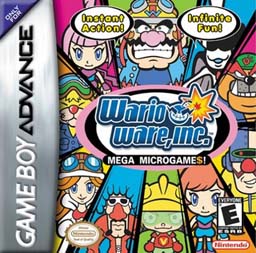
WarioWare, Inc.: Mega Microgames!, stylized as WarioWare, Inc.: Mega Microgame$! and known in the PAL region as WarioWare, Inc.: Minigame Mania, is a minigame compilation party video game for the Game Boy Advance. The debut title in the WarioWare series, the game is about rapid completion of "microgames", short minigames given to the player consecutively and with increasing speed per each game complete. Developed by Nintendo R&D1 and published by Nintendo, the game was inspired by the "Sound Bomber" mode of Mario Artist: Polygon Studio for the Nintendo 64DD. The music and sound effects were recycled from Wario Land 4. The game was produced by Takehiro Izushi and directed by Hirofumi Matsuoka. Matsuoka was also the director of Polygon Studio. Mega Microgames! was released in 2003; in Japan in March, in North America and Europe in May and in Australia in June.

Tetris DS is a puzzle video game developed and published by Nintendo for the Nintendo DS. A part of the Tetris game series, the game supports up to ten players locally, and supported up to four players online with the Nintendo Wi-Fi Connection service.
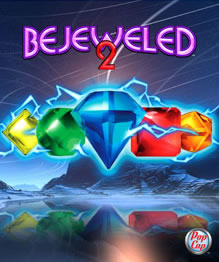
Bejeweled 2, also released as Bejeweled 2 Deluxe, is a tile-matching puzzle video game developed by PopCap Games, and the sequel to Bejeweled. It includes extra game modes and features. Bejeweled 2 Deluxe was released for the Xbox 360 as a downloadable Xbox Live Arcade game on November 22, 2005. In 2007, the game was released on the PlayStation 2 alongside another PopCap game, AstroPop as a two-game compilation pack as PopCap Hits! Volume 1. PopCap also released a version for iOS in 2008. Bejeweled 2 was also released for PlayStation 3 on the PlayStation Network on January 29, 2009, on the Wii via WiiWare on June 14, 2010, and on PlayStation Portable on June 29, 2010, and for Android. As with the original Bejeweled, Bejeweled 2 is based on the Shariki game mechanic.
bit Generations is a video game franchise for the Game Boy Advance, published by Nintendo. It was first announced under the name Digitylish at the Electronic Entertainment Expo (E3) in 2005. Each of the games in the series feature simple controls, gameplay and graphics. All the games were developed by Skip Ltd., except for Digidrive, which was developed by Q-Games.

Planet Puzzle League, known as Puzzle League DS in Europe, and as Panel de Pon DS in Japan, is a video game for the Nintendo DS handheld video game console in the Puzzle League/Panel de Pon visual matching puzzle game series. In North America, Planet Puzzle League is part of the Touch! Generations brand; in Japan, Panel de Pon DS is marketed in the general Touch! brand. The publisher for the game is Nintendo, and the developer is Nintendo second-party developer Intelligent Systems, creator of the original Panel de Pon and its cult classic English-language adaptation Tetris Attack. The game was released in Japan on April 26, 2007 in North America on June 4, 2007, and in Europe on June 29, 2007.
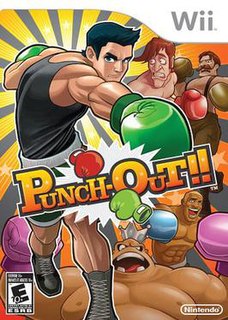
Punch-Out!! is a boxing video game developed by Next Level Games for the Wii. It is the fifth main game in Nintendo's Punch-Out!! series following the Super NES version of Super Punch-Out!!, and is a reboot of the Punch-Out!! series.

Picopict, known as Pictobits in North America and as Pictopict in Australia, is a puzzle video game developed by Skip Ltd. and published by Nintendo for the Nintendo DSi's DSiWare digital distribution service. It is one of seven games released for the DSi's Art Style series of video games. It was announced on January 26, 2009, was released two days later alongside Somnium, another Art Style game, and was released in North America and PAL regions in the same year, on May 18 and May 22 respectively. In Picopict, players use the touchscreen to move coloured blocks into a formation, such as a four-block line or a 2x2 square. This contributes to an 8-bit image, which consist of various Nintendo Entertainment System (NES) characters, such as Mario, Link, and Bowser.

Mr. Driller W is a 2009 puzzle video game developed and published for the WiiWare service by Namco Bandai Games. The eighth entry in the Mr. Driller series, gameplay revolves around clearing each level by destroying, or "drilling", large formations of colorful blocks. Players have an oxygen meter that acts as a time limit, and constantly depletes; air is replenished by collecting air capsules, and is depleted further by destroying brown "X" blocks.
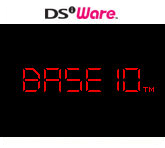
Code, known as Base 10 in North America and Decode in Japan, is a puzzle video game developed by Skip Ltd. and published by Nintendo for the Nintendo DSi's DSiWare digital distribution service.

Aquia, known as Aquite in Europe and Aquario in Japan, is a puzzle video game developed by Skip Ltd. and published by Nintendo for the Nintendo DSi's DSiWare digital distribution service. It was released at the launch of the Nintendo DSi and DSiWare service on April 5, 2009 in North America.

Nemrem, known as Zengage in North America and Somnium in Japan, is a puzzle video game developed by Skip Ltd. and published by Nintendo for the Nintendo DSi's DSiWare digital distribution service.

Boxlife, known as Hacolife in Japan, is a puzzle video game developed by Skip Ltd. and published by Nintendo for the Nintendo DSi's DSiWare digital distribution service.

Dr. Mario Express, known in PAL regions as A Little Bit of... Dr. Mario, is a Mario action puzzle video game published by Nintendo. The game was released as a DSiWare title for the Nintendo DSi platform. Dr. Mario Express was released as a launch title for the DSiWare service in Japan on December 24, 2008, and was released in both North America and PAL regions in 2009. The game was developed by Arika, which had also created Dr. Mario Online Rx for WiiWare.
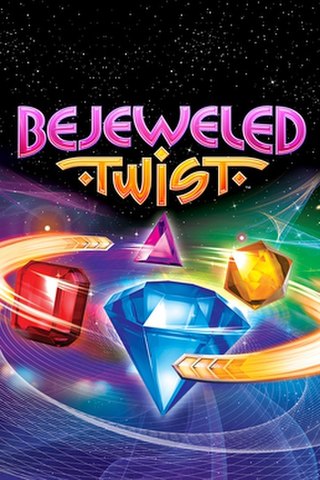
Bejeweled Twist is a puzzle game of the Bejeweled series created and published by PopCap Games, released on October 27, 2008.

Mario vs. Donkey Kong: Minis March Again! is a puzzle video game for the Nintendo DSi. Announced at E3 2009, it is the third game in the Mario vs. Donkey Kong series. It was released via DSiWare in North America on June 8, 2009, in Europe and Australia on August 21, 2009 and in Japan on October 7, 2009. It is the first DSiWare game to feature a level editor in which players can create custom-made levels and send them to players on other devices via a wireless Internet connection.

Ball Fighter is a puzzle video game developed by Teyon for the Nintendo DSiWare. It is available in the Nintendo DSi Shop for 500 Nintendo DSi Points.

Super Swap is an action puzzle game developed by Teyon for the Nintendo DSiWare. It is available in the Nintendo DSi Shop for 500 Nintendo DSi Points.

Mario vs. Donkey Kong is a sub-series of the Mario and Donkey Kong series, based on puzzle video games, marking the return of Pauline, and Donkey Kong's rivalry with Mario.



















